Introduction to Garden Palm Plants

What Are Garden Palm Plants?
Garden palm flora are tropical or subtropical species recognized for their extraordinary fronds and graceful, tree-like look. Typically discovered in heat climates, those vegetation can vary from compact, shrub-sized types to towering fingers that offer colour and visual effect. In gardens, they serve both decorative and useful functions—adding peak, texture, and a wonderful aesthetic to landscapes.
Palms belong specially to the Arecaceae circle of relatives, which includes masses of species, together with the Areca Palm, Sago Palm, and Foxtail Palm. Many of those are well-applicable for Indian gardens due to their adaptability to warm and humid conditions.
Why Palms Are Ideal for Indian Gardens
India’s various climatic zones, specially in tropical and subtropical areas, make it a really perfect environment for developing palm vegetation. Here’s why arms thrive in Indian gardens:
- Heat Tolerance: Most palm species flourish in heat temperatures, with many types tailored to resist extreme daylight and minimal rainfall.
- Low Maintenance: Palms generally require much less pruning and care as compared to other decorative timber.
- Soil Adaptability: Many palms develop nicely in sandy, loamy, or even barely clayey soils—not unusual in Indian areas.
- Urban Versatility: From sprawling lawn landscapes to small balconies, hands can be healthy almost everywhere while selected wisely.
Whether you’re in Kerala’s humid tropics or Rajasthan’s arid zones, there’s a palm range appropriate to your lawn.
Benefits of Incorporating Palms in Landscaping
Palm plants are greater than just decorative additions—they convey several landscaping benefits:
- Tropical Ambience: Instantly provides a lush, lodge-like feel for your lawn.
- Vertical Interest: Their tall, slim form adds peak and size without occupying a good deal floor area.
- Wind and Sun Barriers: Larger hands just like the Royal Palm can act as natural windbreaks or provide partial color.
- Eco-Friendly: Some species help neighborhood biodiversity through presenting shelter and nesting for birds and bugs.
- Indoor-Outdoor Flexibility: Certain arms like Areca or Rhapis can easily transition between indoor pots and outside gardens.
Incorporating palms is an easy manner to elevate your panorama design whilst staying eco-conscious and coffee-upkeep.
Popular Types of Garden Palm Plants
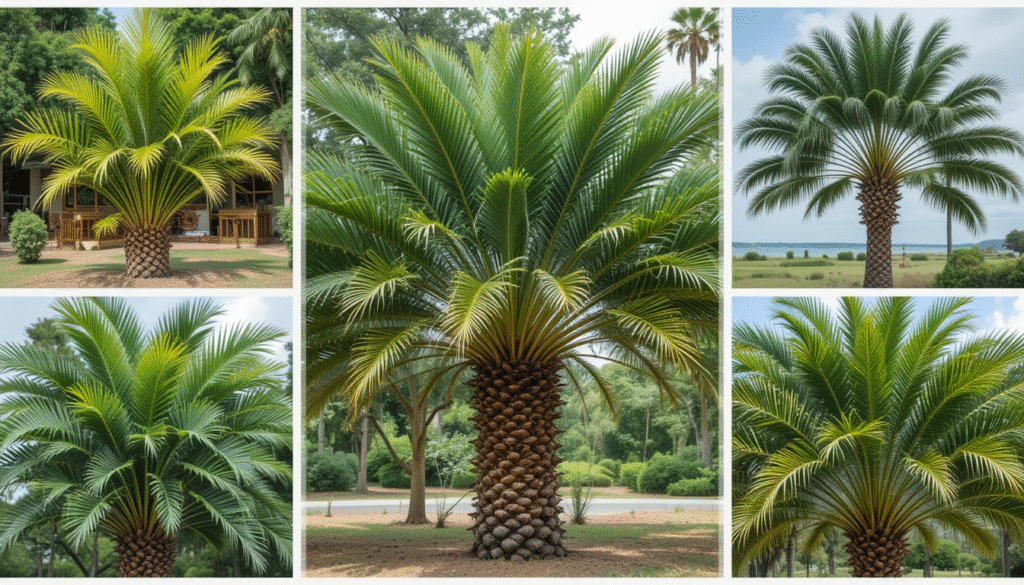
Palm trees are a vital detail in tropical landscaping, especially for domestic gardens in India. Below are the most famous and occasional-preservation garden palm plants suitable for Indian climate, each with unique aesthetics and care necessities.
Areca Palm (Dypsis lutescens)
Areca Palm, also called Butterfly Palm or Golden Cane Palm, is one of the commonly used indoor and outdoor palm flora in Indian homes. Its feathery, arching fronds and clumping boom dependency make it best for developing a tropical hedge or privacy screen.
- Light: Bright indirect sunlight; tolerates partial coloration
- Soil: Well-drained, slightly acidic soil
- Watering: Regular, but avoid waterlogging
- Height: Grows up to 6–10 feet interior; 15–20 ft outdoors
- Best for: Small gardens, balconies, patios, and dwelling rooms
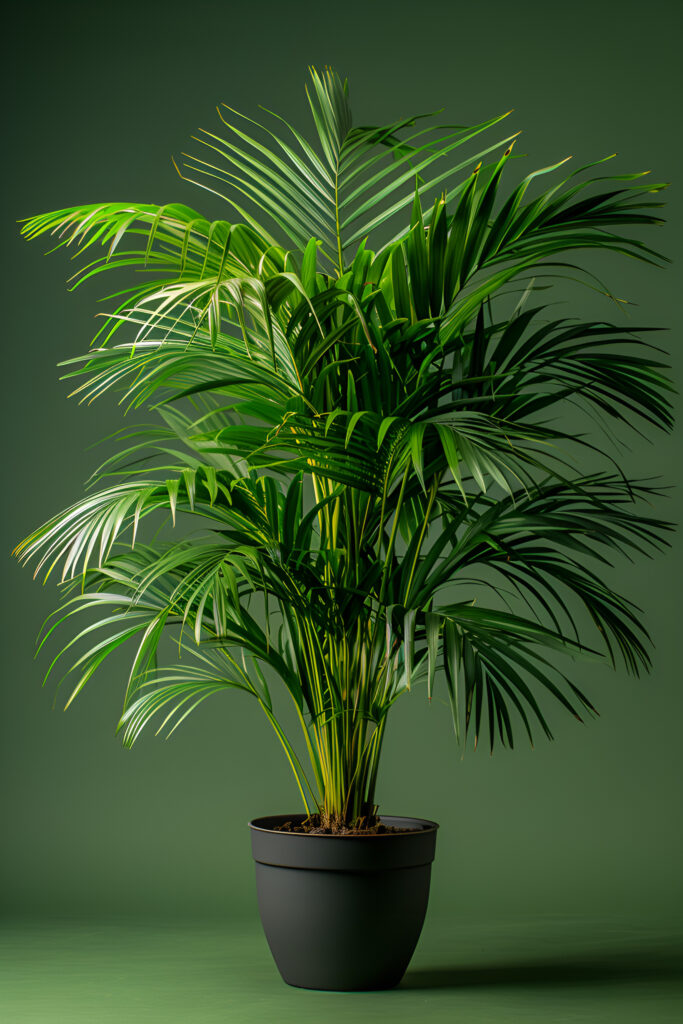
Bismarckia Palm (Bismarckia nobilis)
With its massive, silver-blue fan-fashioned leaves, the Bismarckia Palm is a formidable and striking preference for panorama focal factors. Native to Madagascar, this palm prefers full sun and is drought-tolerant as soon as installed.
- Light: Full solar
- Soil: Sandy or loamy soil with true drainage
- Watering: Moderate; less frequent once mature
- Height: Can develop 30–50 toes tall
- Best for: Large gardens, panorama centerpieces, tropical designs
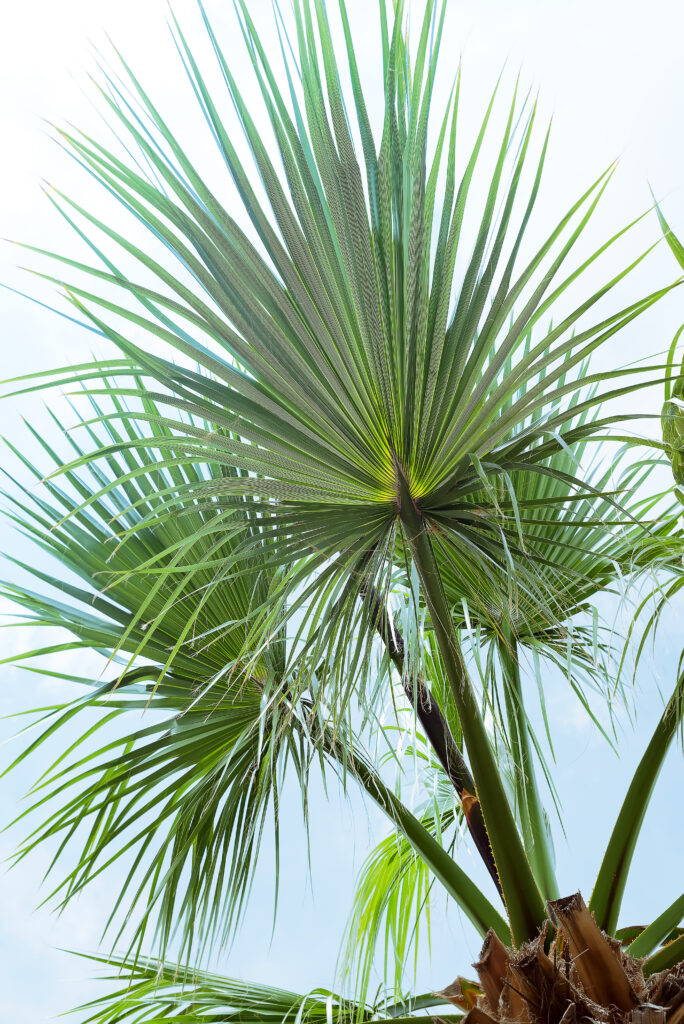
Chinese Fan Palm (Livistona chinensis)
This fashionable palm features dramatic, fountain-like fan leaves and is nicely-appropriate for ornamental lawn borders or large planters. It’s slow-developing and relatively clean to hold, making it a top preference for city and town gardens.
- Light: Full solar to partial color
- Soil: Moist but well-drained
- Watering: Moderate; permit topsoil to dry among waterings
- Height: Up to ten–15 toes over the years
- Best for: Entrance areas, walkways, container gardens
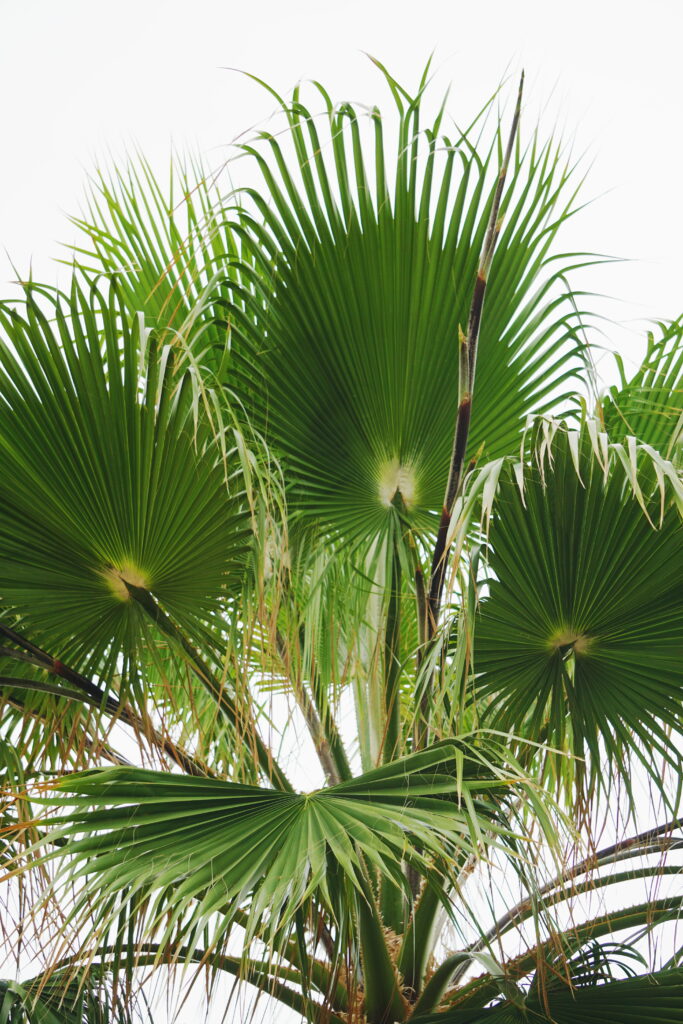
Foxtail Palm (Wodyetia bifurcata)
The Foxtail Palm is one of the most visually attractive palm trees, named for its hairy, foxtail-like fronds. Native to Australia, it adapts properly to Indian coastal and concrete climates and is both fast-growing and wind-resistant.
- Light: Full sun
- Soil: Rich, properly-tired soil
- Watering: Regular at some stage in boom, reduce in wintry weather
- Height: 20–30 feet
- Best for: Driveways, tropical-themed landscapes, swimming pool environment
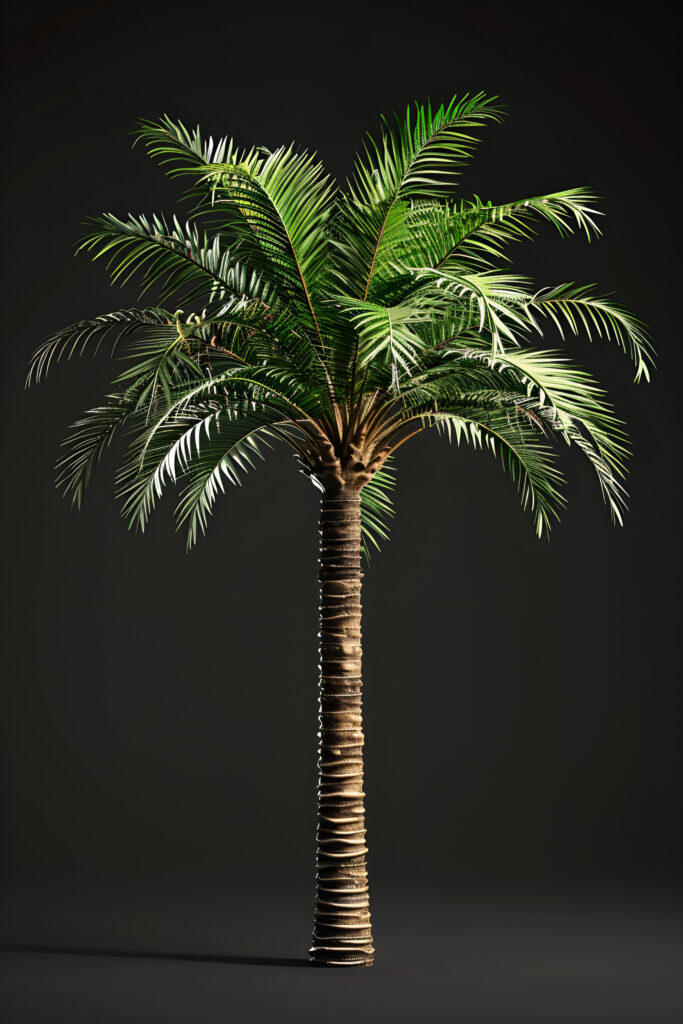
Royal Palm (Roystonea regia)
Known for its easy, grey trunk and symmetrical crown, the Royal Palm adds a majestic contact to luxury landscapes. It calls for area and daylight, making it ideal for avenues or large residential gardens.
- Light: Full sun
- Soil: Deep, wet, fertile soil
- Watering: Consistent moisture, particularly whilst younger
- Height: 40–60 ft
- Best for: Public gardens, estate driveways, palace-themed landscaping

Sago Palm (Cycas revoluta)
Often improper for a true palm, the Sago Palm is a cycad and perfect for low-preservation garden spots. Its stiff, dark inexperienced leaves and compact increase make it suitable for pots and lawn beds.
- Light: Partial solar to light coloration
- Soil: Well-drained, sandy loam
- Watering: Sparing; drought-tolerant
- Height: 2–4 feet (slow grower)
- Best for: Zen gardens, rock gardens, bonsai setups
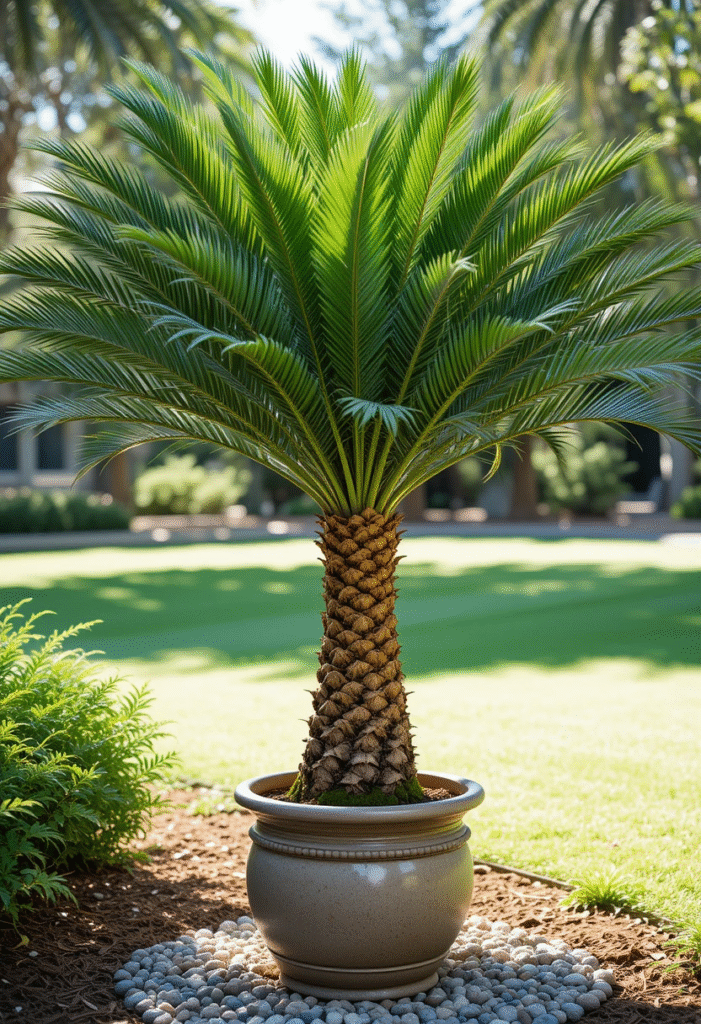
Talipot Palm (Corypha umbraculifera)
The Talipot Palm is a large Indian native palm regarded for generating the sector’s biggest inflorescence earlier than dying—a once-in-a-lifetime flowering occasion. It’s ideal for spacious gardens in which top is needed.
- Light: Full solar
- Soil: Moist, properly-drained soil
- Watering: Regular in the course of dry durations
- Height: 60–eighty feet
- Best for: Botanical gardens, expansive landscapes
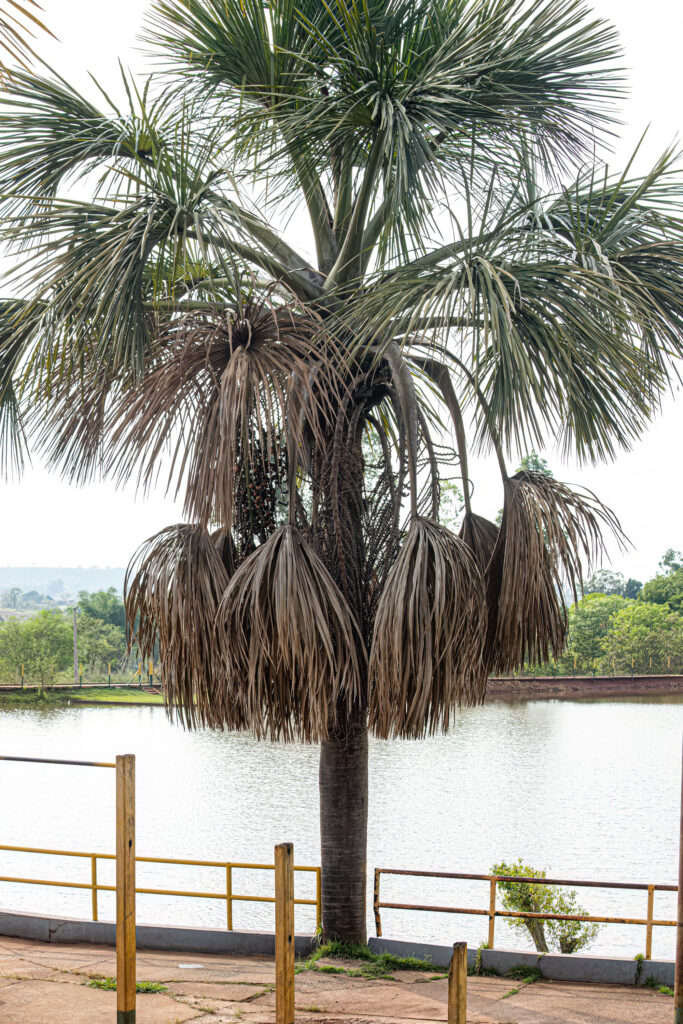
Rhapis Palm (Rhapis excelsa)
Also called the Lady Palm, this variety is good for indoor use or shaded out of doors corners. It grows in clumps with attractive, fan-like leaves and is well-known for being puppy-safe and air-purifying.
- Light: Indirect light or partial coloration
- Soil: Rich, slightly moist soil
- Watering: Moderate; prefers humidity
- Height: 3–6 ft
- Best for: Living rooms, patios, shaded gardens
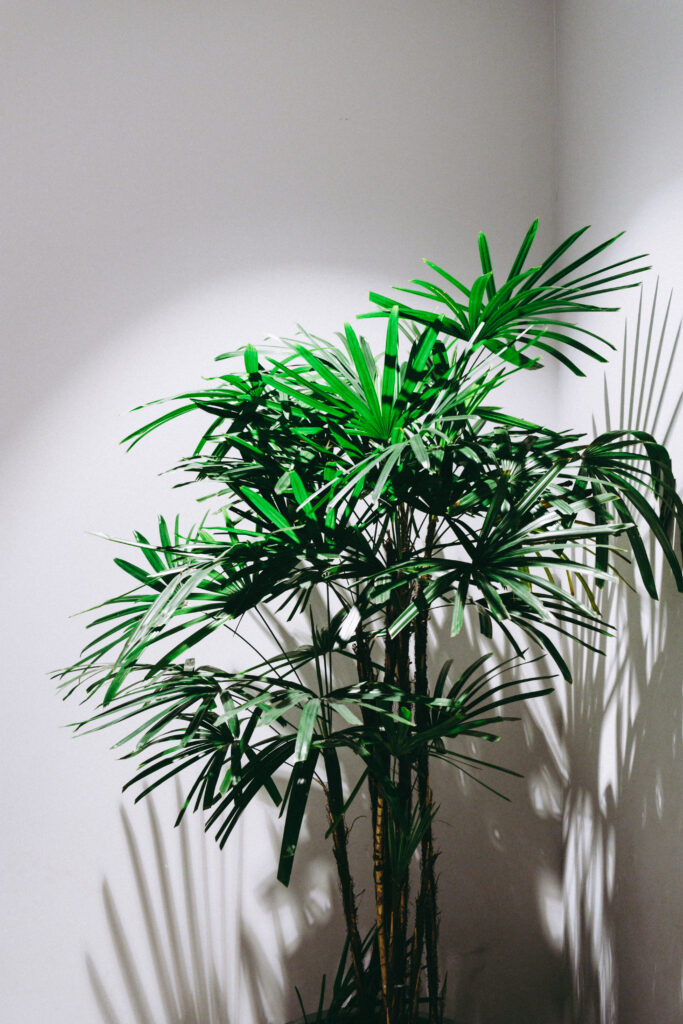
Traveler’s Palm (Ravenala madagascariensis)
Despite its name, this is not a true palm but is carefully associated. The Traveler’s Palm has fan-like, symmetrical leaves that develop in a single plane, presenting a dramatic backdrop in massive lawn designs.
- Light: Full solar
- Soil: Moist, organically wealthy soil
- Watering: Frequent when younger
- Height: Up to forty–50 feet
- Best for: Courtyards, hotel landscapes, tropical centerpieces
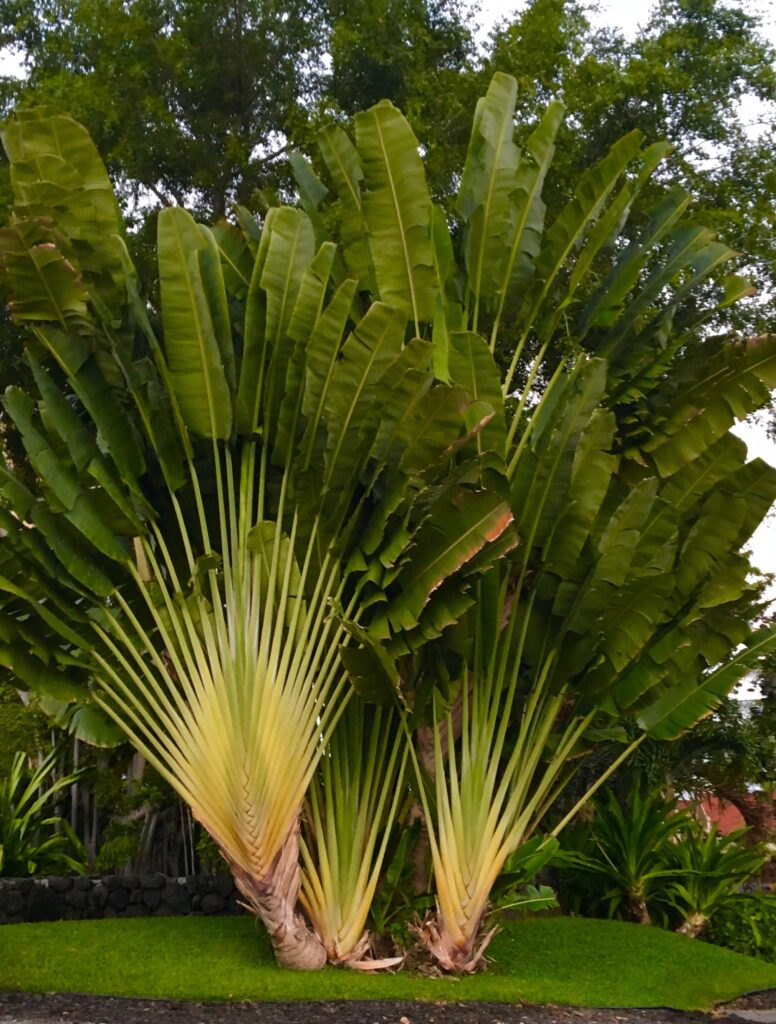
Queen Sago (Cycas circinalis)
A local Indian cycad with longer and extra bendy leaves than Cycas revoluta, the Queen Sago is more adapted to Indian soil and weather conditions.
- Light: Full solar to partial color
- Soil: Loamy and properly-tired
- Watering: Moderate, prefers dry periods
- Height: Up to 10 ft
- Best for: Temple gardens, conventional landscaping, tropical borders
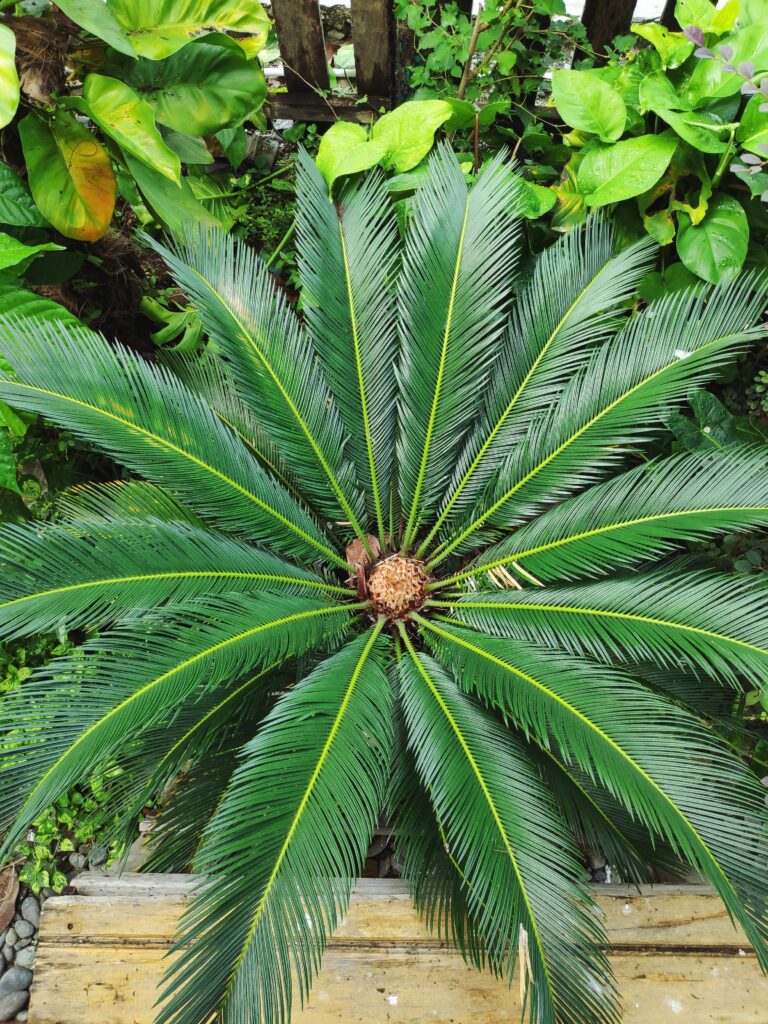
How to Choose the Right Palm for Your Garden
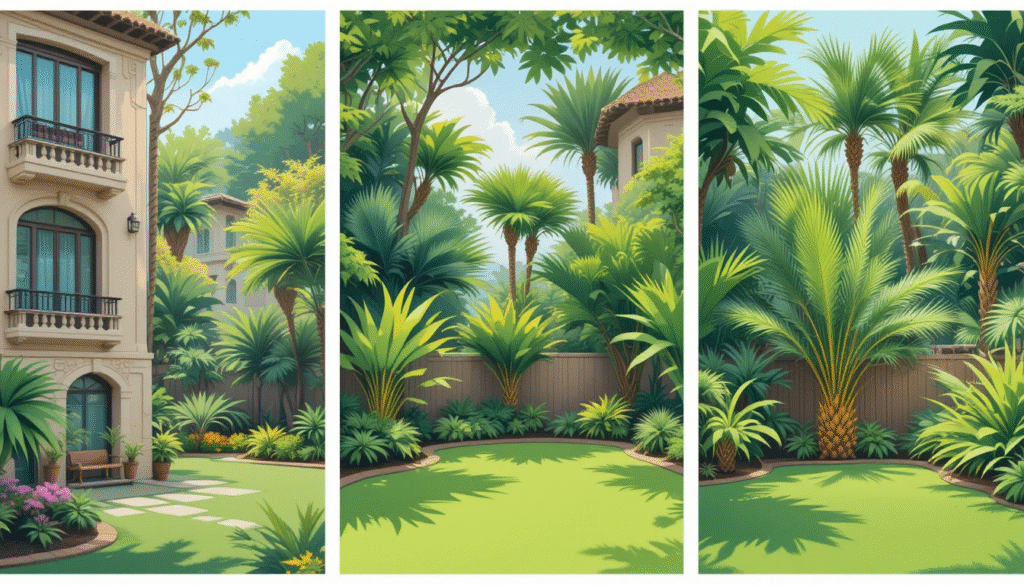
Climate Considerations (Tropical, Subtropical, Temperate)
Choosing the right palm begins with expertise in your neighborhood climate. Most palm species thrive in tropical and subtropical climates, making them ideal for most regions throughout India, specifically the coastal areas and southern states. However, a few arms can tolerate dry or cooler conditions.
- Tropical Climates (e.G., Kerala, Goa, Tamil Nadu): Look for sun-loving, moisture-tolerant types like Areca Palm, Foxtail Palm, and Royal Palm.
- Subtropical/Arid Climates (e.G., Rajasthan, Delhi, Gujarat): Choose hardy palms like Bismarckia Palm, Sago Palm, or Date Palm that could tolerate dry weather and temperature fluctuations.
- Mild Temperate Zones (e.G., components of North India): Cold-tolerant alternatives along with Chinese Fan Palm or Rhapis Palm are ideal for wintry weather resilience.
Space Requirements: Small vs. Large Palms
Consider your lawn size earlier than choosing a palm species. Palms range from compact, hairy flora to towering trees that require ample vertical and horizontal space.
- Small Gardens or Containers: Go for compact species like Sago Palm, Areca Palm, or Rhapis Palm. These are best for balconies, patios, and terrace gardens.
- Medium to Large Gardens: Foxtail Palm, Chinese Fan Palm, or Traveler’s Palm are outstanding picks for adding shape and peak with out overwhelming the space.
- Expansive Landscapes: Royal Palm, Bismarckia Palm, and Talipot Palm are perfect for big estates, accommodations, or road plantations.
Sunlight and Soil Preferences
Palms have varying necessities for solar exposure and soil type, so matching the plant with your lawn’s herbal conditions is key.
- Full Sun Palms: Foxtail Palm, Bismarckia Palm, and Royal Palm thrive in shiny, direct sunlight and are best for open gardens.
- Partial Shade Palms: Areca Palm, Rhapis Palm, and Chinese Fan Palm can tolerate indirect light or dappled color—extremely good for semi-blanketed spaces.
- Soil Needs: Most hands opt for well-tired, loamy or sandy soil. Avoid waterlogged areas, specifically for species just like the Sago Palm.
Pro Tip: Enrich the soil with natural compost earlier than planting and make certain good drainage to save you root rot.
Indoor vs. Outdoor Suitability
Some palm plants are more acceptable for indoor environments, whilst others flourish outdoors with minimal care.
- Best Indoor Palms: Areca Palm, Rhapis Palm, and Sago Palm. These are low-mild tolerant and perfect for living rooms, hallways, or shaded balconies.
- Best Outdoor Palms: Royal Palm, Foxtail Palm, and Traveler’s Palm are great for open areas and sunny gardens.
- Indoor-to-Outdoor Flexibility: The Areca Palm and Chinese Fan Palm can thrive indoors and exterior, depending on light availability.
Pro Tip: For indoor use, ensure proper humidity and keep away from direct air con or heater vents.
Planting and Caring for Garden Palms
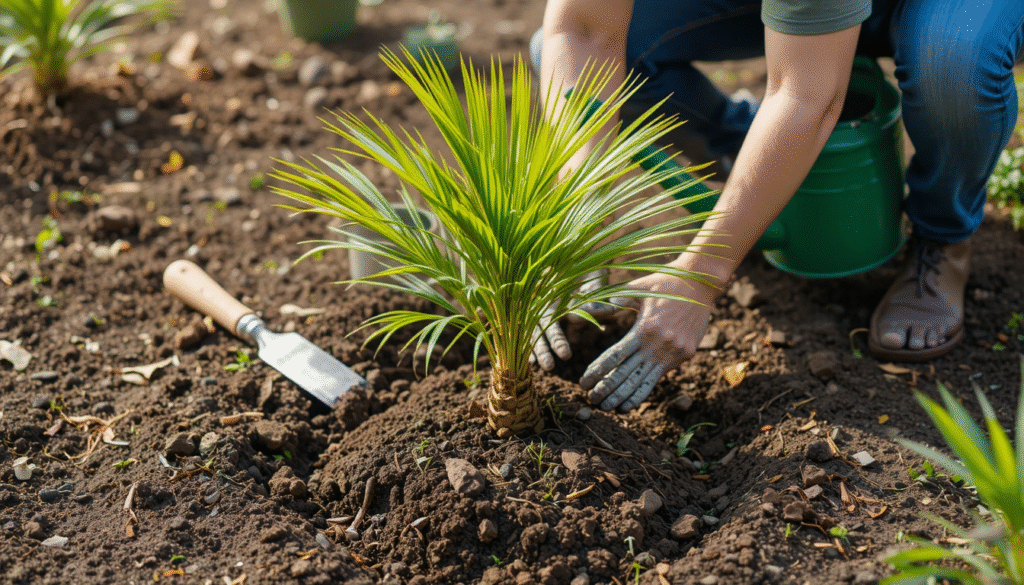
Best Time to Plant Palms
The perfect time to plant palm trees is for the duration of the early monsoon or late spring, whilst the soil is warm, and the foundation gadget can set up fast. Planting in the course of those seasons guarantees better growth because of adequate moisture and most excellent temperatures. Avoid planting in the course of excessive warmth or bloodlessness, as young palms are touchy to harsh situations.
Soil Preparation and Drainage
Well-draining soil is crucial for healthful palm growth. Start by loosening the topsoil and combining it with organic compost or elderly manure to enrich nutrient content. If your soil keeps an excessive amount of water, blend in sand or perlite to enhance aeration and drainage. Palms do not tolerate waterlogged roots, so usually ensure the planting site or field has proper drainage holes.
Watering and Fertilization Tips
Newly planted hands require consistent moisture to set up roots. Water thoroughly after planting and keep with normal watering for the primary few months, mainly at some point of dry spells. Once established, most arms become fairly drought-tolerant however nevertheless benefit from occasional deep watering.
For fertilization, use a slow-launch palm-unique fertilizer rich in potassium, magnesium, and iron. Apply throughout the developing season—usually from early spring to late summer time—following the product’s dosage commands.
Pruning and Maintenance
Palms require minimum pruning. Remove only dead, yellowing, or damaged fronds to maintain look and prevent pest troubles. Avoid over-pruning, as this can stress the plant and preclude boom. For a few species, occasional trimming of suckers or offshoots at the bottom can be had to preserve shape.
Mulching across the base can help hold soil moisture, lessen weed increase, and adjust temperature. Keep mulch some inches far from the trunk to save you fungal infections.
Common Pests and Diseases
While hands are generally hardy, they may be suffering from a few common pests and illnesses. Look out for mealybugs, spider mites, and scale insects at the undersides of leaves. These may be handled with neem oil or insecticidal soap.
Fungal diseases together with root rot and leaf spot are commonly due to overwatering or terrible drainage. Ensure proper soil conditions and avoid water accumulation around the base. For excessive problems, don’t forget consulting a plant fitness expert or nursery expert.
Landscaping Ideas with Palm Plants
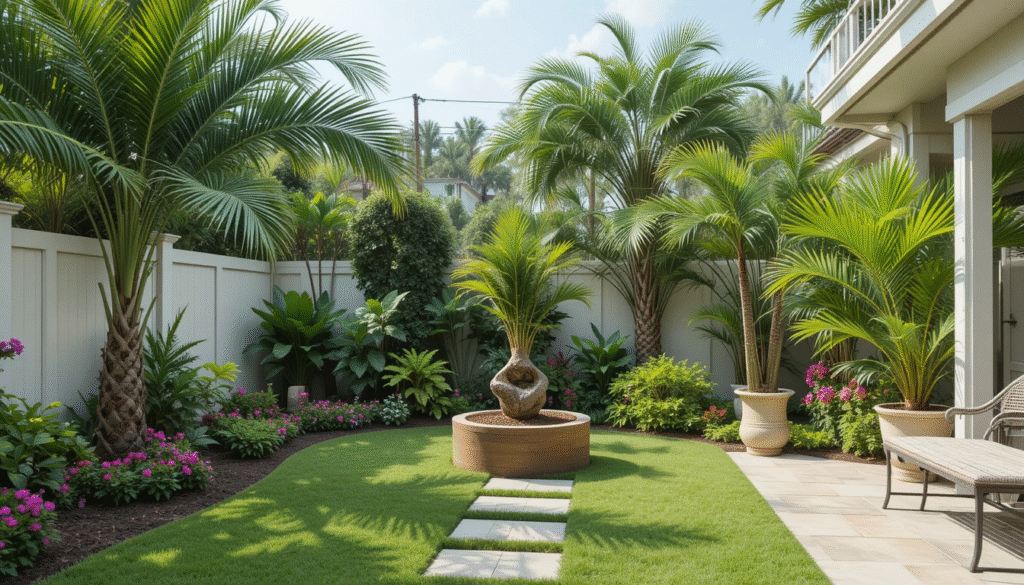
Creating Tropical Themes
Palm plants are a herbal match for growing tropical-themed gardens that sense lush, colourful, and relaxing. Use tall varieties like Foxtail Palm or Royal Palm as vertical accents, complemented by way of extensive-leaved plants including banana trees or hen of paradise. Add elements like natural stone pathways, water functions, and heat-toned lighting fixtures to finish the appearance. A mix of textures and heights can decorate the tropical sense and create visual depth.
Using Palms as Privacy ScreensCertain palm species, especially clumping kinds like Areca Palm or the taller Bismarckia Palm, are extraordinary for forming natural privateness displays. Plant them in rows along boundary walls or fences to block direct views at the same time as permitting filtered mild airflow. Their dense foliage now not the simplest guarantees privateness however additionally adds an inexperienced, elegant touch to the outer edge of your garden or patio space.
Combining Palms with Other Plants
To make your garden greater dynamic, integrate palms with flowering shrubs, ferns, and ground covers. Use lower-growing flowers like coleus, ixora, or caladium around the base of hands to fill in gaps and provide assessment in color and form. In shaded areas, pair color-tolerant palms like Rhapis with hostas or impatiens. This layered planting approach creates a greater whole and visually balanced panorama.
Container Gardening with Palms
If the area is confined, palms can thrive in boxes and nevertheless make a robust effect. Choose compact or gradual-growing species like Sago Palm, Chinese Fan Palm, or Areca Palm for patios, balconies, and indoor courtyards. Use robust, properly-draining pots and area them in spots that obtain adequate mild. Container fingers can be easily moved and styled, making them ideal for renters or city gardeners who need bendy greenery alternatives.
Where to Buy Garden Palm Plants in India
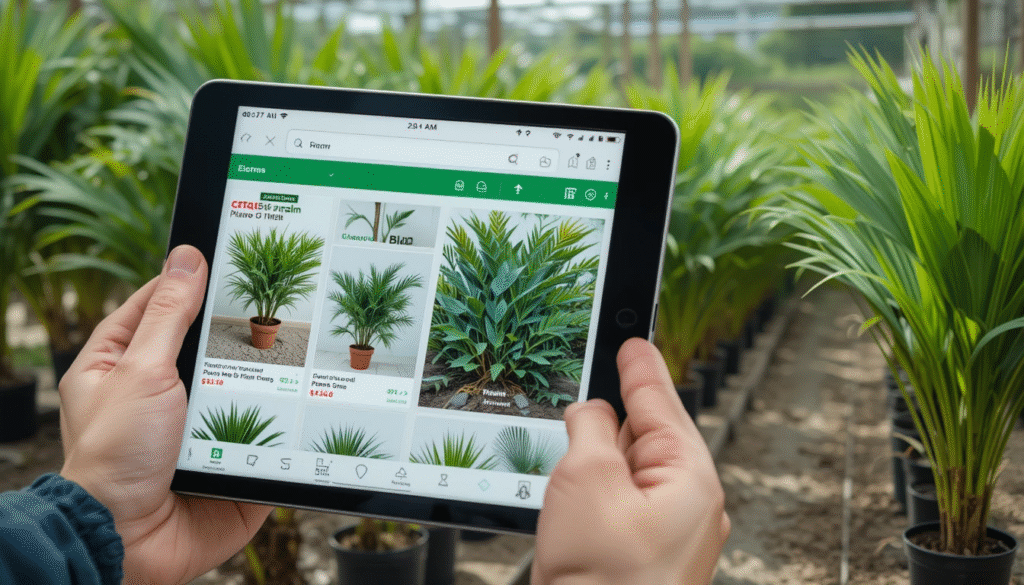
Trusted Online Nurseries
Buying palm flora online has ended up handy and dependable with the boom of exceptional-focused e-commerce nurseries. Many trusted platforms now offer a big choice of palm types appropriate for Indian climates, brought at once to your doorstep.
Look for nurseries that:
- Specialize in tropical and decorative plants
- Offer targeted plant care instructions
- Provide steady packaging and stay plant shipping ensures
- Have real client critiques and responsive help
Some reputed on-line plant stores encompass Ugaoo, Nurserylive, Plant Orbit, and MyBageecha. Always test in the event that they deliver to your town and whether they provide replacements for damaged plant life.
Local Garden Centers and Nurseries
Visiting a nearby nursery lets you investigate the flora and pick based totally on size, condition, and adulthood. Garden facilities frequently have knowledgeable workforce who can suggest the proper palm species in your vicinity’s weather and soil.
Benefits of purchasing locally:
- Immediate get right of entry to to plant life without a delivery postpone
- Opportunity to ask care-related questions
- Better possibilities of getting location-particular varieties
- Support for small agencies to your community
Explore neighborhood nurseries, municipal garden outlets, or agricultural universities that run plant income.
Tips for Selecting Healthy Plants
Whether buying online or in person, it’s crucial to choose wholesome palm flora so as to thrive in your garden. Here are a few quick tips:
- Check for shiny inexperienced, undamaged leaves without brown pointers or yellowing
- Avoid flowers with soggy or foul-smelling soil, which may additionally suggest root rot
- Ensure the plant has a sturdy central stem and company base
- Look for well-evolved root structures that aren’t root-bound
- Avoid overly tall fingers in small pots, as they’ll be unstable
Healthy fingers are much more likely to adapt quickly to new environments and develop vigorously with proper care.
Order Directly from Greenarium Landscapes
At Greenarium Landscapes, we develop and supply a curated series of garden-ready palm plant life applicable for Indian climates. Whether you are seeking out low-renovation palms to your balcony or big specimens for your landscaping task, we deliver across predominant towns in India.
📩 Place an order or request a quote the use of the form under:
Conclusion
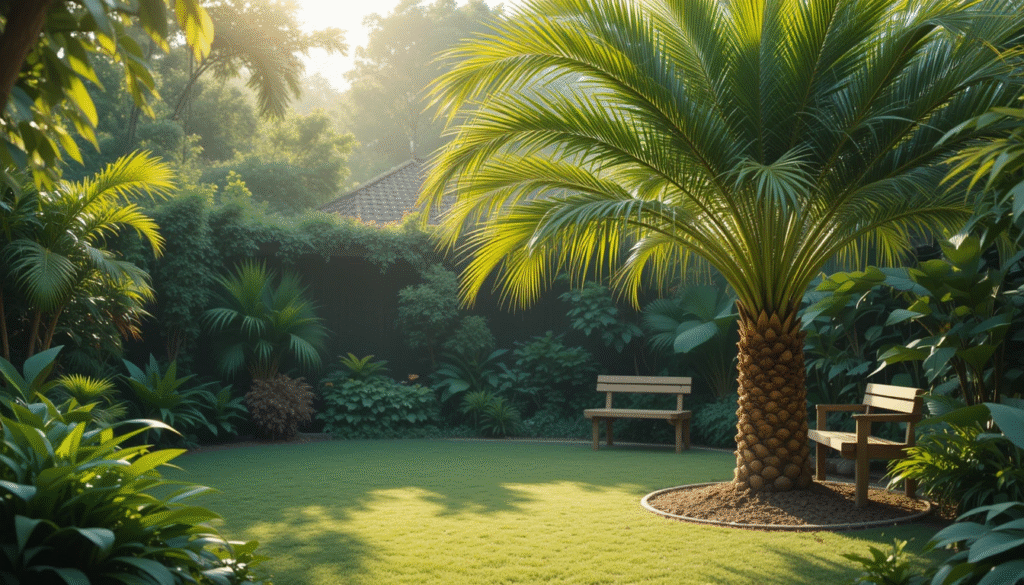
Recap of Key Points
Palm vegetation is flexible, low-renovation, and perfect for including tropical appeal to gardens of all sizes. From choosing the proper species primarily based on your weather and space to getting to know approximately soil coaching, watering, and pest care, this guide covers everything you need to hopefully grow and keep garden palm flora in India. Whether you’re developing a lush panorama or a small balcony oasis, there’s a palm range to suit your needs.
Encouragement to Start Your Palm Garden
Now is the right time to carry home the beauty of palms. Start small with an Areca or Sago Palm, or pass bold with a Foxtail or Royal Palm as a focus to your lawn. With the proper care and making plans, arms can thrive and rework your area right into an inexperienced retreat.
Invitation to Share Experiences or Ask Questions
Have you planted arms to your lawn already? Thinking of including a new range however uncertain which one to select?
We’d love to hear from you!
Drop your questions, present your palm garden pics, or go away a remark under. Our team at Greenarium Landscapes is right here to help with customized recommendations and hints.
FAQs
Which palm plants are best for Indian gardens?
Areca Palm, Foxtail Palm, and Royal Palm are popular choices for Indian gardens due to their ability to thrive in tropical and subtropical climates.
Can I grow palm trees in pots?
Yes, compact varieties like Sago Palm, Chinese Fan Palm, and Areca Palm grow well in large containers with proper drainage and sunlight.
How much sunlight do palm plants need?
Most palm plants prefer full to partial sunlight. Some, like Areca and Rhapis palms, tolerate low light and are suitable for indoor or shaded areas.
How do I care for palm plants?
Water moderately, avoid waterlogging, and use a balanced fertilizer during the growing season. Prune only dead or yellowing fronds.
Where can I buy healthy garden palm plants in India?
You can purchase from trusted online nurseries or order directly from Greenarium Landscapes via the form provided in this blog.
